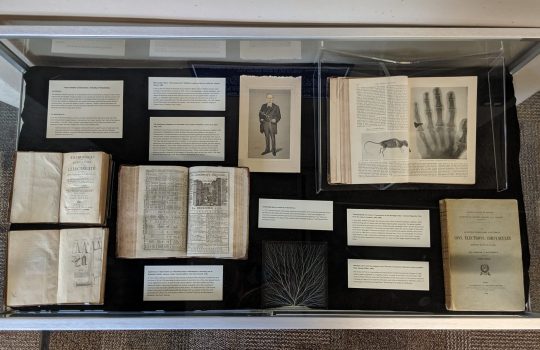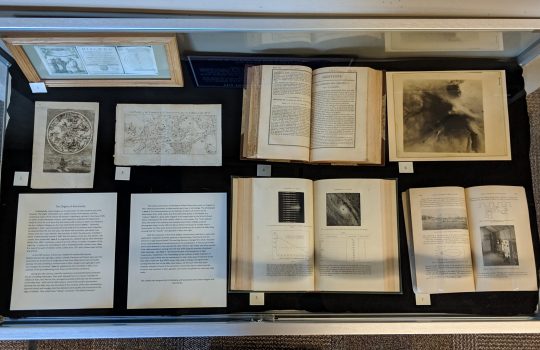Exhibit on the history of electricity at Fermilab through June
The newest exhibit presented by Fermilab scientist Erik Ramberg and the Fermilab Archives gives the viewer a glimpse into the fascinating history of the study of electricity. Since 600 BC, scientists and philosophers have theorized on how electrical charge is transferred from one site to another. In the 18th century, experiments testing these theories took off. In the exhibit, see primary texts and early images of electricity at work.


